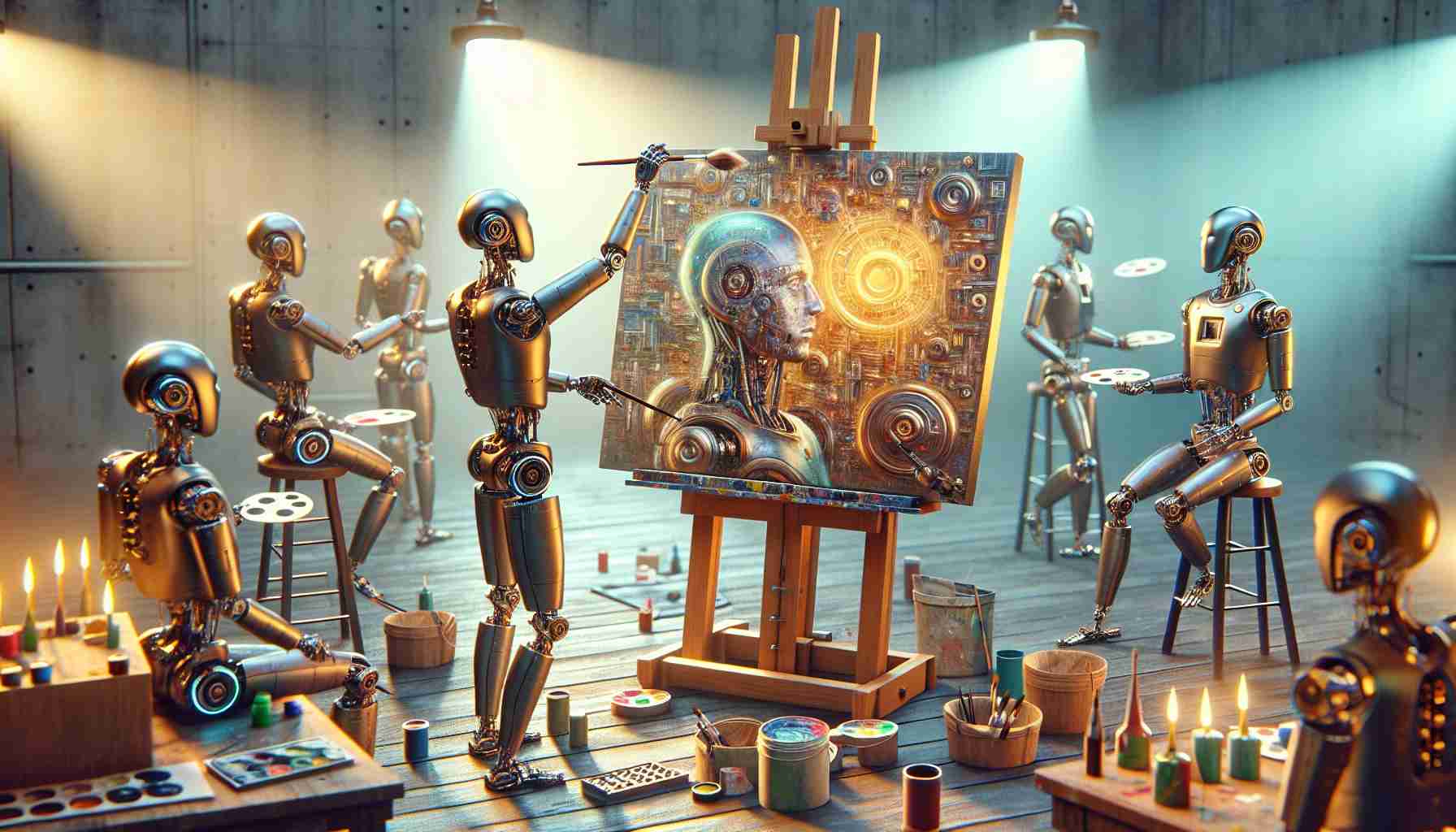“`html
“`
The world of art is being challenged by an unconventional painter: Ai-Da, a humanoid robot. In a groundbreaking auction on November 7, Ai-Da’s depiction of Alan Turing sold for an astonishing $1,084,000 at Sotheby’s. This sale has stirred conversations about the role of technology in artistic creation.
Ai-Da, created by Aidan Meller, represents a fusion of technology and artistry. Equipped with cameras, AI algorithms, and robotic capabilities, Ai-Da is reimagining the boundaries of art. Meller stands by the robot’s pioneering role, comparing it to artistic revolutionaries of the past who dared to redefine art, such as Picasso and Matisse.
Meller explains that Ai-Da’s existence is a provocative topic in the art community, igniting discussions about creativity and innovation. Ai-Da’s artworks result from a synergy between AI and human contributors, highlighting a collaborative approach to art that involves both high tech and human touch.
The sale of Ai-Da’s painting marks a significant moment, suggesting a shifting perception of AI’s role in art. For many, the astonishing auction price indicates a growing acceptance of AI-generated art. Meller views this acceptance as a recognition of AI’s influence and creative potential.
However, the debate continues as some traditionalists question the authenticity of AI-generated art, comparing it to marketing hype rather than genuine creativity. As the art world navigates these new innovations, the line between human and machine artistry becomes ever more blurred.
The Rise of Robot Artists: How Ai-Da is Transforming Creativity
The recent sale of Ai-Da’s painting for over $1 million has sparked widespread interest and debate about the role of artificial intelligence in the realm of art. But the implications of this development stretch far beyond the confines of the art world, impacting the future of technology and human creativity in profound ways.
Revolutionizing Art and Technology
Ai-Da, the humanoid robot artist, equipped with advanced cameras, AI algorithms, and robotic arms, is redefining what it means to be creative. By blending the capabilities of machines with the traditional elements of art, Ai-Da is pioneering a new frontier. This fusion between technology and artistry could pave the way for a technological renaissance, influencing how we perceive and create art.
One of the most intriguing aspects of Ai-Da’s artistic process is the collaboration between AI and human input. This synergy raises important questions about authorship and creativity, challenging conventional notions about what it means to be an artist.
Advantages and Disadvantages of AI in Art
The integration of AI into artistic creation offers several advantages. It can democratize the art-making process, providing tools and opportunities to those who might not otherwise have access. It also allows for endless experimentation and innovation, producing artworks that push the boundaries of traditional aesthetics.
Nevertheless, there are noteworthy disadvantages to consider. The use of AI in art can devalue human creativity and craftsmanship. Some critics argue that AI-generated art lacks the emotional depth and intentionality that human artists bring to their work. The question of whether machines can truly “create” remains contentious.
Controversies Surrounding AI Artists
The emergence of AI artists like Ai-Da brings forth a host of controversies. Are these creations a genuine expression of artistic thought, or are they simply clever simulations of creativity? Can a robot possess artistic intent, or does it merely replicate patterns it has learned from human artists?
These controversies are emblematic of a broader philosophical debate: what does it mean to be creative? If machines can produce art, is creativity still an innate human trait, or can it be artificially constructed?
Potential Impact on the Future
The success of Ai-Da’s artwork signals a potential shift in how society values AI contributions. This shift may extend beyond art, influencing other fields such as design, music, and writing. As AI systems grow more sophisticated, they may enable new forms of creative expression and collaboration.
While the blending of AI and human creativity presents promising new avenues, it also demands a cautious approach. We must ensure that the use of AI respects and preserves the core human values that underpin genuine creativity: intentionality, emotional depth, and personal expression.
Related Questions and Answers
1. Q: Can AI truly be creative?
– A: This is a debated question. AI can replicate and innovate based on existing patterns, but whether it possesses intrinsic creativity akin to humans is still contested.
2. Q: How might AI impact the future of the art industry?
– A: AI could democratize art creation and push the boundaries of artistic media, but it might also challenge traditional notions of art and authorship.
3. Q: Would AI-generated art devalue traditional artwork?
– A: While it challenges traditional art, AI could also elevate it by creating a new appreciation and dialogue on what art truly is.
Further Reading: For more insights into the role of AI in creative industries, check out Sotheby’s and Artsy.
